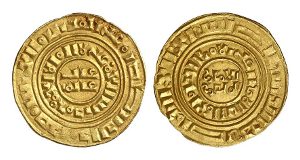exchange between
Russian coins and medals (XV-XX century)
 The history of Russian coins is still relatively short. In its development, the monetary business of Russia did not directly rely on ancient or medieval designs, and yet in an amazingly short time it reached such a level of diversity and beauty that collectors quickly become fascinated with striking images on coins and medals, as well as large-scale gold and silver minting.
The history of Russian coins is still relatively short. In its development, the monetary business of Russia did not directly rely on ancient or medieval designs, and yet in an amazingly short time it reached such a level of diversity and beauty that collectors quickly become fascinated with striking images on coins and medals, as well as large-scale gold and silver minting.
Whereas the money of many countries of the world, such as the American dollar, takes its name from the silver thaler, minted since the end of the 15th century, Russia has come a special way in the field of coinage. Continue reading
European coins and medals (XVI-XXI century)
 New time in numismatics begins in Europe around 1500 in the lands of the Habsburgs. In 1486, by order of the Archduke Sigismund (1439-1490), the Tyrolean guldengros was minted. It was the world’s first full-weighted silver coin, corresponding in value to the Rhine gold guilder. This coin became a model of European coins in the next 400 years.
New time in numismatics begins in Europe around 1500 in the lands of the Habsburgs. In 1486, by order of the Archduke Sigismund (1439-1490), the Tyrolean guldengros was minted. It was the world’s first full-weighted silver coin, corresponding in value to the Rhine gold guilder. This coin became a model of European coins in the next 400 years.
The name of this successful coin comes from the name of the location of the silver mines of Joachimstal, which were owned by the von Schlick counts. Hence the name “thaler”. Continue reading
Crusader coins (ca. 1095-1523)
 It is unlikely that there will be events that have had such a strong influence on the social and cultural development of the medieval world from the 11th to the 13th centuries, like the crusades and the associated founding of Christian states in Palestine and the Mediterranean.
It is unlikely that there will be events that have had such a strong influence on the social and cultural development of the medieval world from the 11th to the 13th centuries, like the crusades and the associated founding of Christian states in Palestine and the Mediterranean.
In 1095, in the French city of Clermont, Pope Urban II (1088-1099) called for the liberation of the Holy Land from the Muslims and thereby caused a wave of crusades of the high Middle Ages. Continue reading





